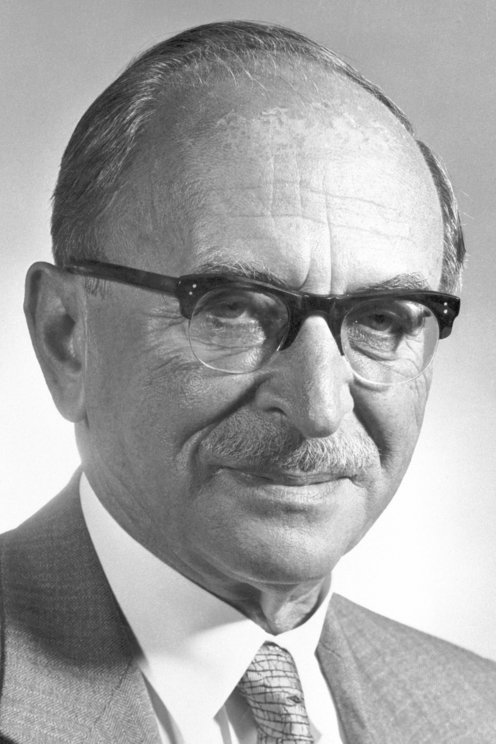Dennis Gabor

Honorary Member Dennis Gabor was born in Budapest, Hungary, on 5 June 1900. His lifelong love of physics started at age 15. He was especially influenced by Gabriel Lippmann's method of color photography. Gabor and his brother built a small laboratory in their home, where they repeated popular experiments of the day. When Gabor was ready for college, he chose to study engineering rather than physics because physics was not yet a profession in Hungary.
Although Gabor studied at the Technische Hochschule Berlin, he often travelled to the University of Berlin to hear lectures by Einstein, Planck, Nernst, and von Laue. His doctoral work centered on development of one of the first high-speed, cathode ray oscillographs. In the course of this work Gabor made the first iron-shrouded, magnetic electron lens. In 1927 Gabor joined Siemens & Halske AG, where he made a high-pressure quartz mercury lamp with superheated vapor and closed with a molybdenum tape seal. After its introduction, the component became integral to millions of street lamps.
When Hitler came to power in 1933, Gabor left Germany and after a short time in Hungary travelled to England. He found a job with the British Thomson-Houston Co., where he remained until the end of 1948. During that last year at Thomson-Houston, Gabor carried out basic experiments in holography, which at the time was termed “wavefront reconstruction.” He began these experiments with the goal of creating an electron microscope able to resolve atomic lattices and image single atoms. However, as Gabor himself once stated, “We started 20 years too early.”
With the advent of a coherent light source, the laser, holography became practical. In 1962 Emmett Leith and Juris Upatnieks at the University of Michigan and Yuri Denisyuk in the Soviet Union created holograms based on Gabor’s early work. Gabor had coined the term hologram from the Greek words holos, meaning "whole," and gramma, meaning "message.” Gabor’s technique to reconstruct a three-dimensional image from phase and magnitude information also led to advances in signal processing. The Gabor Transform is one of the essential ideas in wavelet theory used for digital signal processing.
In 1949, Gabor joined the Imperial College of Science & Technology in London, first as a reader in electronics. He later became a professor of applied electron physics. Over the next 17 years Gabor and his graduate students and colleagues attacked many problems including elucidation of Langmuir’s Paradox, the inexplicably intense electron interaction in low pressure mercury arcs. They also made a Wilson cloud chamber that allowed them to measure the velocity of particles by introducing a high-frequency critical field.
Other research involved a holographic microscope, an electron-velocity spectroscope, an analog computer, a flat, thin color television tube, and a new type of thermionic converter. The group also developed theoretical work for communications, plasmas, and magnetrons.
Following his retirement in 1967, Gabor remained connected with Imperial College as a senior research fellow. He also became a staff scientist of CBS Laboratories, Stamford, Conn. where he collaborated with his longtime friend, Peter C. Goldmark, on many new schemes related to communications and displays.
As a scientist Gabor believed that a serious mismatch had developed between technology and social institutions, and that inventive minds ought to consider social inventions as their first priority. He expressed this conviction in three books, Inventing the Future, Innovations, and The Mature Society.
Gabor’s career was marked by many honors including the Nobel Prize for Physics, the IEEE Medal of Honor, the French Physical Society’s Prix Holweck, Commander of the Order of the British Empire, the Franklin Institute’s Michelson Medal, and the Royal Society’s Rumford Medal.
Gabor died in London on 8 February 1979.
Document Created: 26 Jul 2023
Last Updated: 28 Aug 2023
